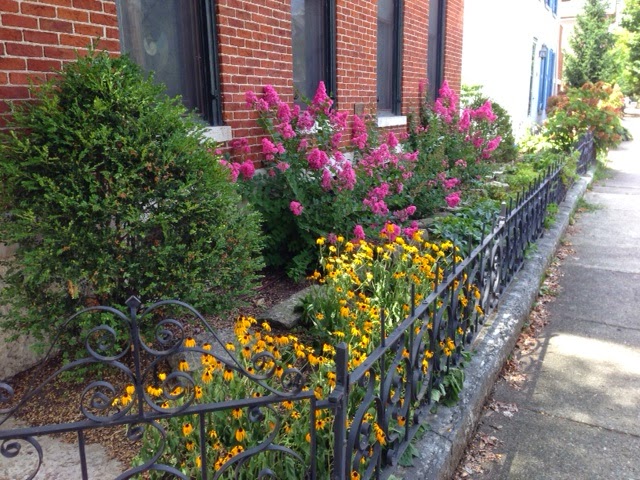That, at least, is the rather simplified picture of the natural world that reflects the state of biological understanding I grew up with in the 1950s, before ecology and genetics came into their own in scientific circles. Now of course we know that it's actually a lot more complicated.
Consider fungi, for example. Scientists now classify them as neither plants nor animals, but instead as living beings comprising an entirely separate kingdom in biological taxonomy. And their work is the opposite of plants. They are the decomposers, life forms that take apart the structures plants and animals create. And they are just as essential to a healthy ecosystem as the plants who bring life out of non-life. They too--the decomposers--wield the power of transformation. By disassembling the complex structures of no longer living plants and animals, they make the elements bound into those now-dead structures available again to be incorporated into new and different living beings. Sauteed mushrooms, anyone?
So what prompted these musings? Quick answer: two occurrences in the garden, plus the fact that today is Labor Day.
The garden first. About a week and a half ago, I took this picture of Mongo:
Never having been a foster-mother to a pumpkin before, I wasn't sure, but that really looked to me like a pumpkin approaching harvest time. So the next day (last Tuesday), I seized the opportunity to consult with Emily of Mile Creek Farm (we are the downtown pickup point for their CSA). She said that yes indeed, Mongo was now harvestable, and their practice was to go ahead and harvest, not leave things sitting around. By that time, Mongo looked like this:
If you look closely at this picture, you will notice that by then Mongo's warts had turned entirely orange, and that I followed Emily's advice and cut Mongo's stem from the vine. Mongo is now adorning our kitchen table, along with some of Emily's sunflowers:
I'm pretty sure it was Thursday when I cut Mongo's stem, Friday when I brought him inside, and Saturday when I washed him off and gave him the place of honor on the table. Sunday--yesterday--we had a good soaking rain for several hours, very welcome, as the garden had gotten quite dry. Sunday afternoon, on impulse, I checked the pumpkin vine, and what do you suppose I found?
Mongo has a sibling! That little green bulbous swelling at the base of the flower is exactly what Mongo looked like at the same age. Since it is impossible to determine the gender of a pumpkin, and since Mongo sounds to me like a boy's name, I have arbitrarily decided to balance things out and designate this one a girl. I'm calling her Monguette, the French feminine form of Mongo. Now it's a race against time. Today is already September 1--will there be enough growing season left for Monguette to ripen? We'll see. Even if she doesn't ripen fully, I bet there will be enough time for her to become an excellent Halloween decoration.
The arrival of Monguette is the first of the two garden occurrences I referred to above. The second happened this morning. As I mentioned, yesterday we had a good soaking rain. This morning when I went out to retrieve the newspaper, here is what I saw:
So lovely, so delicate, these little decomposers that sprang up overnight! Look in that second picture, how they seem to be embracing my birthday rock.
So here I am on Labor Day, the first Labor Day of my retirement, reflecting on mushrooms and Monguette. My birthday rock, symbol of my life so far, embraced by lovely decomposers. One structure of my life, the formal work of spirituality ministry, is over. Now it's time for the lovely decomposers to embrace that dead structure, disassemble it, and make its elements available for reassembly into something new and full of life--something perhaps as unexpected, untamed, and vigorous as the vine that gave me Mongo and Monguette. Will there be enough time for whatever fruit comes to ripen fully? Who knows? But I bet there will be enough time for it to be a blessing in some way.
My job is to welcome both the embrace of the decomposers and the wild unruly new sprouts. It's a different kind of labor, but well worth celebrating on this Labor Day.
















































